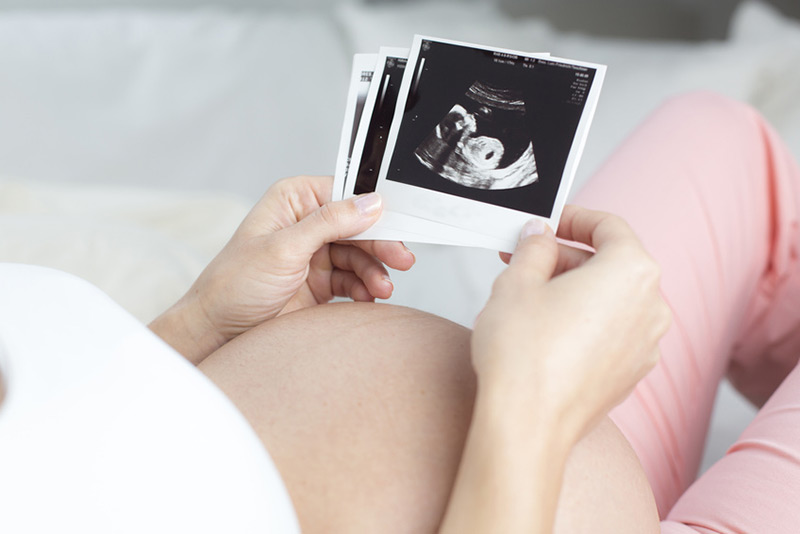 You are pregnant or you assume to be pregnant? A visit with your OB/GYN doctor gives you confirmation. These joyful, exciting news will change your daily life remarkably. In an individually tailored consultation, your doctor will explain what you need to know about pregnancy related changes in your body, and what to pay attention to in order to stay healthy and maintain physical, mental and spiritual wellbeeing throuhout your course of pregnancy. What sort of physical activity and sports may be perfomed in pregnancy, how to nutrate healthy for mom and growing baby, what to know about travelling, sun exposure and medication intake whilst pregnancy and how to balance career, work load and stress release in the upcoming month.
You are pregnant or you assume to be pregnant? A visit with your OB/GYN doctor gives you confirmation. These joyful, exciting news will change your daily life remarkably. In an individually tailored consultation, your doctor will explain what you need to know about pregnancy related changes in your body, and what to pay attention to in order to stay healthy and maintain physical, mental and spiritual wellbeeing throuhout your course of pregnancy. What sort of physical activity and sports may be perfomed in pregnancy, how to nutrate healthy for mom and growing baby, what to know about travelling, sun exposure and medication intake whilst pregnancy and how to balance career, work load and stress release in the upcoming month.
As part of pregnancy care taking you will see your doctor for regulary check up’s. Your baby's growth will be monitored as much as your own wellbeing. Sometimes morning sickness, orthostatic dysregulation, digestion or sleeping problems will need a little more attention and treatment. Additionally, blood tests and ultrasound examinations will be performed. Together with your doctor, a pregnancy care calendar will be set up telling you which routine examinations and what sort of special investigations can be performed at what gestational age.Why they are beneficial, what they may tell you about your baby and help you decide, which are of interest in your individual situation.
Screening for Gestational Diabetes in Pregnancy
A screening test for gestational diabetes in pregnancy, a Glucose Tolerance Testing (GTT) will be offered to all pregnant ladies around week 24 to 28 gestational age. In cases of predisposition to diabetes, a positive history of gestational diabetes in former pregnancies, a pre-existing type-1 diabetes or abnormalities in routine pregnancy ultrasound, the GTT might be performed earlier in pregnancy. Those patients at increased risk for diabetes or women presenting with overt signs or symptoms of hyperglycaemia such as polyuria, polydipsia, glycosuria, recurrent urinary tract infections may be screened for diabetes at their first antenatal visit. Depending on the results of the plasma glucose measurement fasting and at 1 and 2 hours after glucose exposure, the doctor will define certain goals in blood sugar self-testing the woman needs to restrict herlself to. Untreated or poorly monitored gestational diabetes can harm mother and baby. In gestational diabetes, the pancreas works overtime to produce insulin, but the insulin does not effectively control blood glucose levels. Although insulin does not cross the placenta, glucose and other nutrients do. High blood glucose levels pass the placenta, overfeeding the baby, which causes the baby's pancreas to produce extra insulin.Since the baby is getting more energy than it needs to grow and develop, the extra energy is stored as additional body fat.
This can lead to macrosomia, a "huge, fat " baby. Babies with macrosomia may face health problems, including obstructed labour, injury to their shoulders during birth. Because of the increased excessiv insulin production (hyperinsulinemia) by the baby's pancreas, newborns may have very low blood glucose levels at birth and are at higher risk for breathing problems and temperature disregulations.
A diet for pregnant women with GDM should be a healthful and well-balanced eating plan aiming at supporting the pregnancy and promoting blood sugar balance. Consistency in its meal timing needs to be emphasized. In order to motivate and empower patients, diabetes education and nutrition counseling should be sensitive to special patient needs and cultural traditions. A dietitian can determine together with the pregnant lady, how many calories are needed per day and help teaching how to find proper portion size and right amounts of protein, carbohydrates, and fat. If dietary changes aren't sufficient to maintain the blood sugar in a satisfying range, insulin might be required.
Group B Streptococcus Testing (GBS)
In third trimester, facing end of pregnancy, a simple high vaginal swab can be performed to rule out colonization with B-Streptococcus bacteria. Colonization with these germs is mostly asymptomatic and des not cause any complaints for the mother to become. Still, a transmission to the newborn at birth can be relevant and lead to a higher risk of neonatal infection.
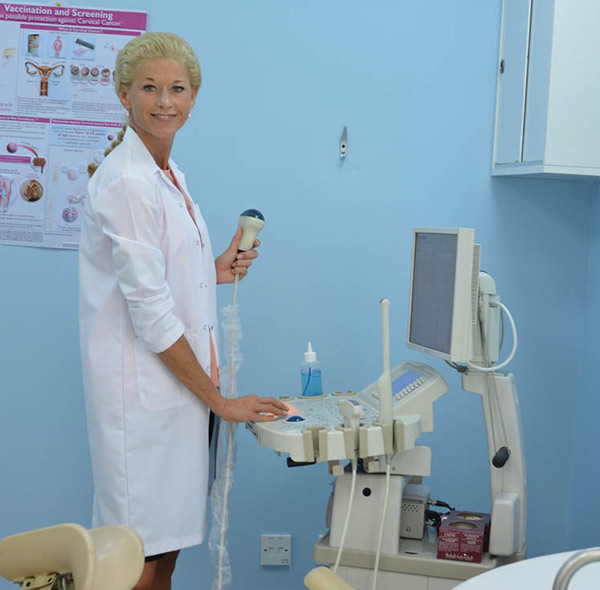 Cardiotocography (CTG)
Cardiotocography (CTG)
Starting from week 30 gestational age, your baby's fetal heart rate can be monitored externally or transabdominal with cardiotocography (CTG). Using two transducers positioned on the mothers tummy, Cardiotocography (CTG) measures your baby's heart rate. At the same time it also monitors the contractions in the womb meaning the muscle tonus of the uterus simultaniously. Therefore, an elastic belt is placed around the mother's abdomen. It has two round plates or transducers which make contact with the skin. One of these plates measures the baby's heart rate. The other transducer assesses the pressure on the tummy, and in this way is able to show if a contraction happens and allow an estimate of how strong it is. The baseline of your baby's heart beat rate as well as its alterations according to uterine contractions indicate how well or stressed your baby reacts to uterine contractions. CTG is used both before birth (antenatally) and during labour, to monitor the baby for any signs of distress. By looking at various different aspects of the baby's heart rate your doctor can see how the baby is coping.

The very first dating Ultrasound examination after a positive urine pregnancy test usually confirms early detection of pregnancy, it determines the number of babies you are carrying, i.e. singleton or multiple pregnancy and it checks your baby is growing in the correct place, meaning not as an ectopic pregnancy, which develops outside the uterus. Starting from about week 7 gestational age, fetal heart beat can be vizualized. This scan confirms how many weeks pregnant you are by measuring the emryos crown rump length (CRL) to obtain a most accurate due date.In the following antenatal visits routine ultrasound examinations focus on fetal growth in accordance to gestational age, fetal symmetry, fetal movements and activity. It also locates your placenta and assess the volume of amniotic fluid around your baby. Estimated fetal weight is measured. Ultrasound scanning has been used in pregnancy for nearly three decades. There has been no proven association between ultrasound exposure in pregnancy and possible harmful effects to your baby.
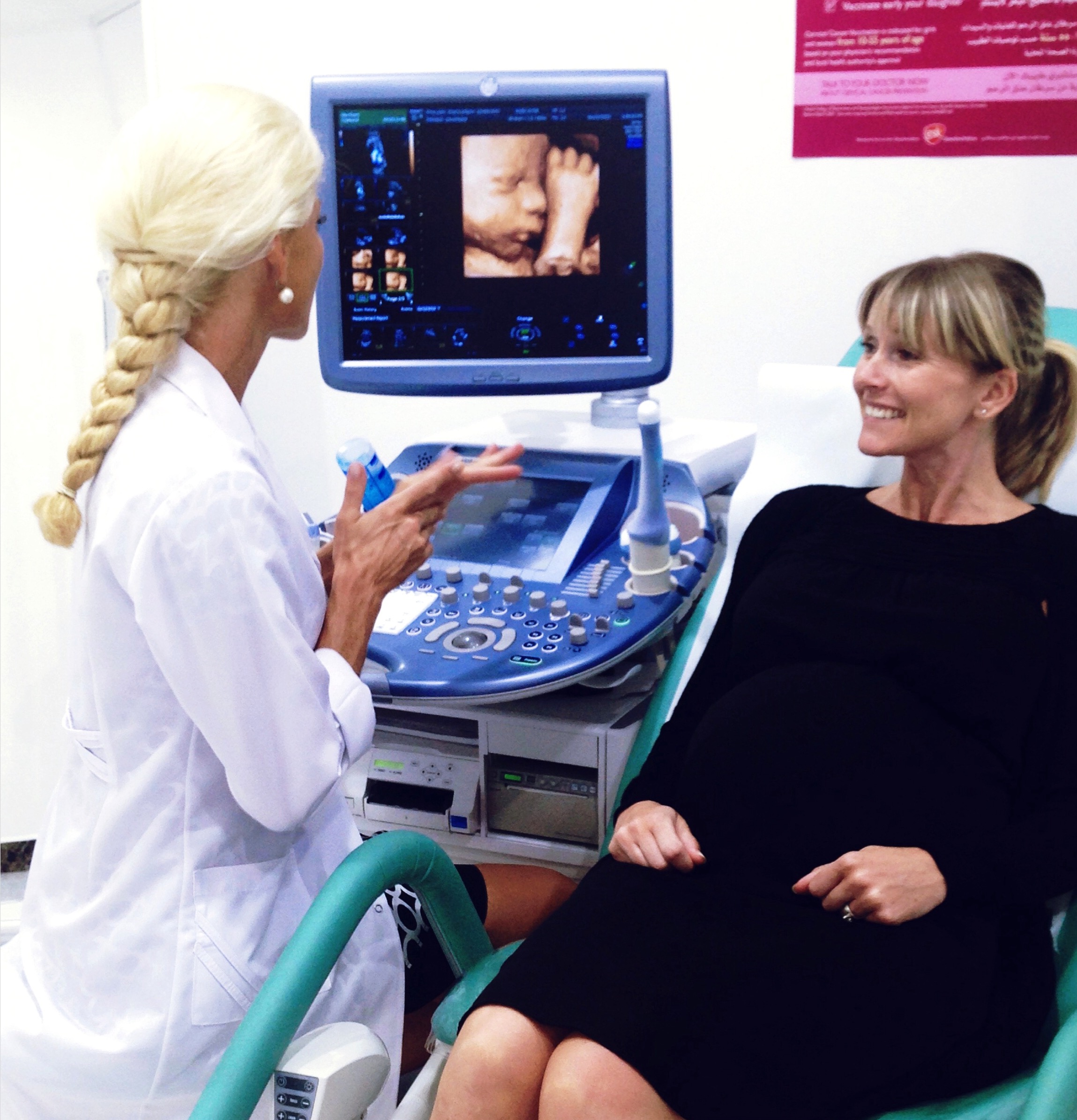
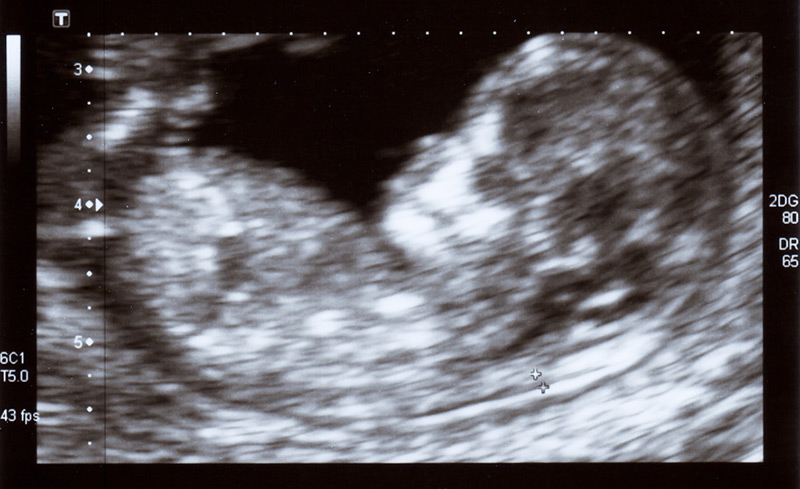
This first „extended“ ultrasound examination in pregnancy is beeing performed in week 11+0 till 13+6 gestational age. Within this period, ultrasound conditions are optimal to get the required informations for this prenatal combined test. The First Trimester Screening is also often referred to as Down-Syndrome-Screening, although this investigation intends to rule out more genetic determined syndromes than just Down syndrome. The examination is a risk assessment calculating a couples individual risk for carrying out a baby that might be affected by a specific chromosomal abnormality such as Trisomy 21 (Down syndrome), Trisomy 18 (Edwards syndrome) or Trisomy 13 (Patau syndrome). It combines a Nuchal Translucency measuring (tiny clear space in the tissue at the back of the baby's neck) by high frequency ultrasound with certain biochemistry markers in maternal blood. Therefore a special blood test measures levels of two pregnancy-specific substances in the mother's blood. With this two-steps-approach including the mother age risk, an individual risk assessment for the parents to become can be performed. A few additional so-called ultrasound „soft markers“ can be vizualized also in ultrasound and can help interpreting the results. For the first trimester screening assessment, there is no fetal blood sample or amniotic fluid sample required. The first trimester screen is a routine screening that is not an invasive procedure and poses no known risks to the mother or baby. Abnormal test results warrant additional testing for making a diagnosis, such as invasive diagnostic tests (CVS or amniocentesis) or a Non Invasive Prenatal Test (NIPT).

Non Invasive Prenatal Test (NIPT)
Alternativly to a first trimester sceening or as an additional confirming test after an abnormal first trimester screening test result, a Non Invasive Prenatal Test (NIPT) can be performed. The NIPT intends to rule out chromosomal abnormalities in the fetus using molecular genetic analysis. NIPT is performed on a maternal blood sample which contains DNA fragments from the fetus. During pregnancy, cell-free DNA fragments from both the mother and fetus can be found in maternal circulation. It is possible to analyze fetal cell-free DNA to detect fetal trisomies. Although NIPT can be performed in all pregnancies without specific indication, it might be most appropriate in pregnancies with an increased risk upon a high maternal age (> 40 yrs) or abnormal result of the first trimester screening. In these cases NIPT may be an alternative to invasive testings such as amniocentesis (AC) or chorionic villus sampling (CVS).
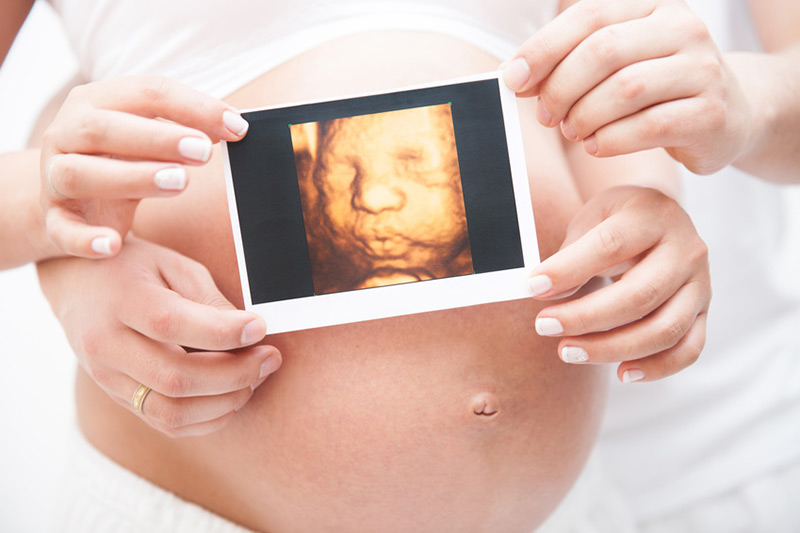
Routine Mid-Trimester-Scan and Anomaly Scan
A routine mid-trimester scan is usually performed between 19 to 22 weeks of gestation. The main objective of a routine mid trimester fetal ultrasound scan ist to provide optimized antenatal care for best possible outcomes for mother and fetus. Goals are to perform fetal measurements (fetal biometry) and evaluate fetal age, size and estimated fetal weight using measurements in a standardized manner based on ultrasound guidelines. Fetal wellbeing (relaxed intrauterine fetal position with regular fetal movements), fetal heart activity, basic fetal organ anatomy in an anatomical organ survey are examined. Also amniotic fluid assessment, placental appearence and location and umbilical cord are vizualized. Gender of the baby can usually be vizualized too. In case of suspected or detected abnormalities, patients can be referred for more detailed fetal ultrasound diagnostics in specialised medical institutions. Although many malformations can be identified with ultrasound, some may be missed or may develop later in pregnancy. Therfore benefits and limitations of this assessment need to be discussed with each couple.
 Routine antenatal blood testings are recommended in all pregnant ladies. Blood testings on maternal blood group constellation, testings to rule out the most common infectious diseases or to determine maternal immunity in order to prevent from a primary infection throughout course of pregnancy are usually performed as screening tests. In addition, regular urine dip stick testings, monitoring of maternal weight gain and maternal blood pressure are part of the regular pregnancy check up. Some more specific testings may be advisable in women presenting special symptoms, in women with a predisposition for certain diseases or in pregnants under special exposure (job, traveling etc.)
Routine antenatal blood testings are recommended in all pregnant ladies. Blood testings on maternal blood group constellation, testings to rule out the most common infectious diseases or to determine maternal immunity in order to prevent from a primary infection throughout course of pregnancy are usually performed as screening tests. In addition, regular urine dip stick testings, monitoring of maternal weight gain and maternal blood pressure are part of the regular pregnancy check up. Some more specific testings may be advisable in women presenting special symptoms, in women with a predisposition for certain diseases or in pregnants under special exposure (job, traveling etc.)
Glucose Tolerance Testing (GTT)
A screening test for gestational diabetes in pregnancy, a Glucose Tolerance Testing (GTT) will beoffered to all pregnant ladies around week 24 to 28 gestational age. In cases of predisposition to diabetes, a positive history of gestational diabetes in former pregnancies, a pre-existing diabetes type-1 or abnormalities in routine pregnancy ultrasound, the GTT might be performed earlier in pregnancy. Those patients at increased risk for diabetes or women presenting with overt signs or symptoms of hyperglycaemia such as polyuria, polydipsia, glycosuria, recurrent urinary tract infections may be screened for diabetes at their first antenatal visit. Depending on the results of the plasma glucose measurement fasting and at 1 and 2 hours after glucose exposure, the doctor will define certain goals in blood sugar self-testing the woman needs to restrict herlself to.
Group B Streptococcus Testing (GBS)
In third trimester, facing end of pregnancy, a simple high vaginal swab can be performed to rule out colonization with B-Streptococcus bacteria. Colonization with these germs is mostly asymptomatic and des not cause any complaints for the mother to become. Still, a transmission to the newborn at birth can be relevant and lead to a higher risk of neonatal infection.
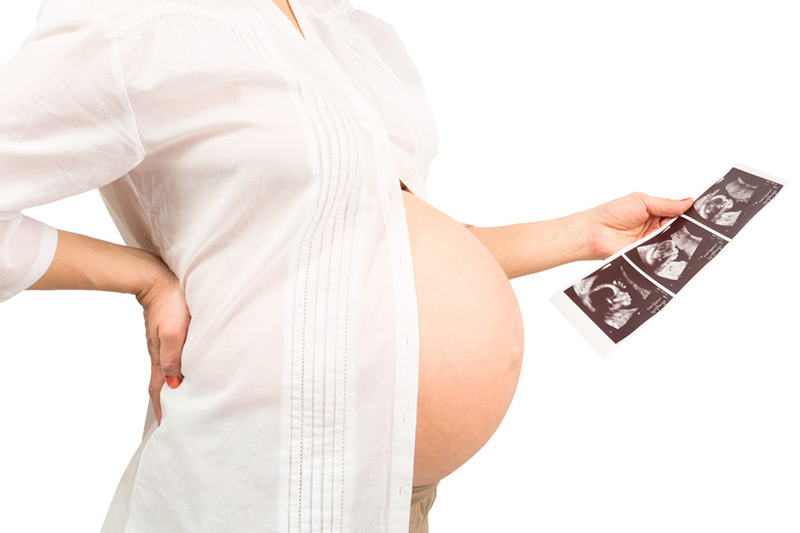
This can lead to macrosomia, a "huge, fat " baby. Babies with macrosomia may face health problems, including obstructed labour, injury to their shoulders during birth. Because of the increased excessiv insulin production (hyperinsulinemia) by the baby's pancreas, newborns may have very low blood glucose levels at birth and are at higher risk for breathing problems and temperature disregulations.
A diet for pregnant women with GDM should be a healthful and well-balanced eating plan aiming at supporting the pregnancy and promoting blood sugar balance. Consistency in its meal timing needs to be emphasized. In order to motivate and empower patients, diabetes education and nutrition counseling should be sensitive to special patient needs and cultural traditions. A dietitian can determine together with the pregnant lady and the obstetrician, how many calories are needed per day and help teaching how to find proper portion size and right amounts of protein, carbohydrates, and fat. If dietary changes aren't sufficient to maintain the blood sugar in a satisfying range, insulin might be required.
Creating a birth plan is very individual and needs to be discussed with each couple by your care-taking doctor.This consultation needs to meet all your preferences and expectations and it should also target a womens concerns, fears and anxieties, such as how to manage labour pain. Benefits and possible risks and complications of different modes of delivery may be discussed as well as benefits and possible risks and complications of an epidural in labour as one choice of pain relief. Choice of delivery hospital and importance of antenatal classes should be discussed also. Being informed about what usually happens in maternity hospital once a patient is in labour, when to admitt yourself to the maternity hospital often helps to release from unnecessary worries.Visitig the delivery ward of your choice may also give you a better idea of what to expect and where to go once it´s time. Usually hospitals perform seminars for parents to become and may offer a tour around the labour suites.
Antenatal Classes
Antenatal classes help couples to be prepared for labour and birth, physically and emotionally.They inform about relaxation techniques and stress management, help you to manage labour pain. Give an overview of pain relief choices, labour positions and train breathing techniques.There is a great variety of antenatal classes, women-only classes and couple classes including yoga or pilates elements, water gymnastics, massage skills, hypnobirthing and many more. Think about what you hope to gain from antenatal classes so that you can find the sort of class that suits you best.



